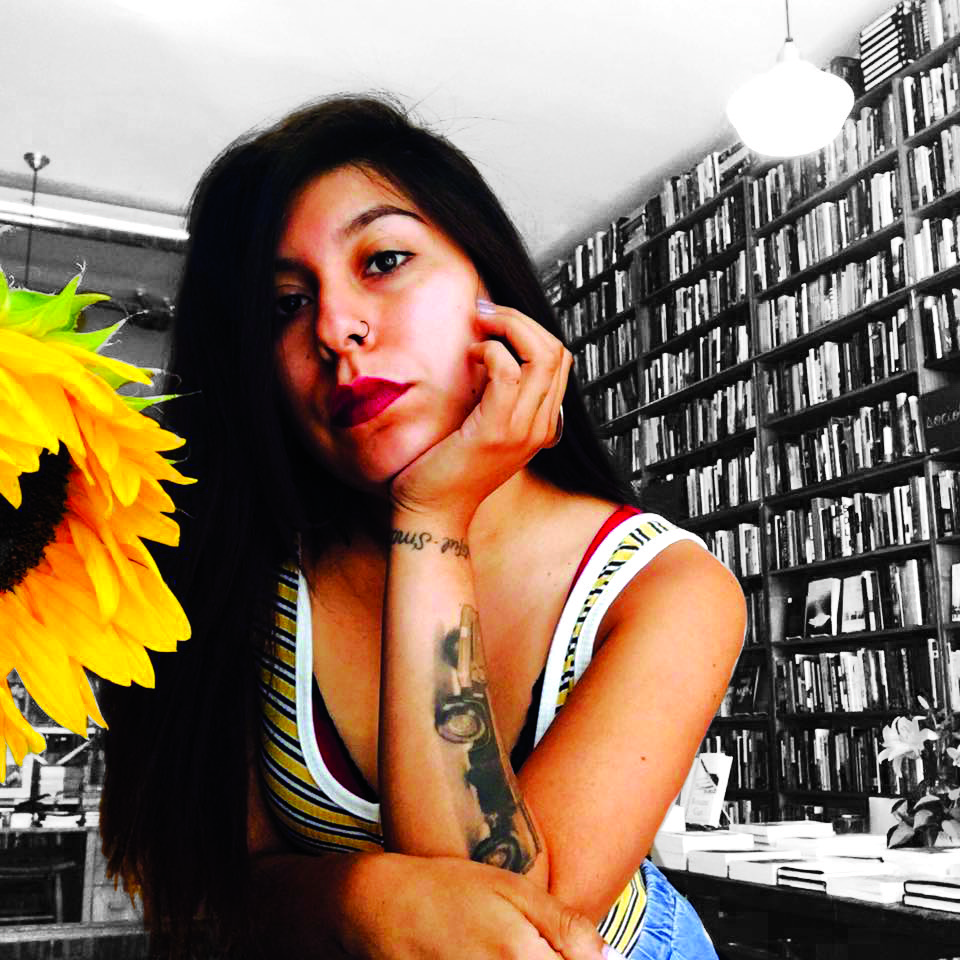by Luz Magdaleno Flores
Just today, I sent my lowrider foto zine to my amiga. She has access to a colour printer at the non-profit she works at, and hooks me up from time to time. That’s how we do it out here as people of colour making zines, nos apoyamos — we help each other out. I’m going on my fourth year now as a zine maker. It was never something I expected to get into, to be completely honest.
I grew up in Southern Califaztlan, and even though I am now proud of the punk community and zines that come out of my hometown, they never found their way to me growing up. I moved to Chicago for undergrad and joined an activist club in 2014. During the uprisings in Ferguson, I got so annoyed that my homie Alvaro Zavala, an incredibly talented artist, and I, a journalism major with a passion for photography, were being asked to go knock on doors and phone bank for mediocre politicians instead of using our talents for the greater cause.
Talking through our frustration, a fellow Chicana organizer suggested we make a zine. “Qué es un zine/what’s a zine?” I thought to myself. Well, a quick trip to Quimby’s bookstore and a closer look inside record stores quickly got my attention. I fell in love with how honest and non-commercial the contents within zines were. I hit up Alvaro, and he quickly got on board. We started to document the stories of the activists we admired. We created ¿SERIO? Zine.

It ran for seven issues covering topics such as economic justice, intersectional feminism, climate change, Mexican-American identity, queer narratives, survival tips, love and activism, and the haunt of colonization. It shared crystal knowledge, reviewed metal and punk bands, shared dope art by people of colour, and mucho más. It wasn’t printed in the highest quality (we were starving students after all!), but we put in a lot of work, stayed up late, bothered our friends to submit, posted flyers all over, hit up strangers, got hella frustrated (printing isn’t easy!), and made it happen.
We went on to win the social justice award from Roosevelt University in 2016. Our five-dollar zine sold enough copies to help fund trips to Toronto’s Queer Zine Fair, New Orleans Comic and Zine Fest, Santa Cruz Zine Fest and Los Angeles Zine Fest. It wasn’t easy though. Not only was the profit non-existent, but being all up in white spaces can be exhausting. A lot of white folx would walk by our table and see that we were two brown kids selling social justice propaganda and kept on walking. That didn’t bring us down though, because everywhere we went, we met other zinesters of colour!
I am forever thankful to Monica Trinidad, co-founder of Brown and Proud Press, for teaching me about zine history. When I lead zine workshops, the first thing I tell youth is that zines have always been written by people of colour. We credit Ida B. Wells’ anti-lynching pamphlets as the first recorded political zine in North America. We have always been on the forefront of zines, and we will always be here.
I admit, I am a pretty big zine nerd. I have learned more from the truth spilled onto the pages of zines than from any mainstream publication. Zines have given me a creative outlet combining all the things I love: activism, storytelling, layout design, binding, calligraphy, photography, art, and shit talking. And all you need to make one is a piece of paper and a pen!
We have taken a hiatus from ¿SERIO? Zine, but Alvaro and I continue to produce zines as new core organizers for Brown and Proud Press. We found a space that welcomes people of colour to use zines as a catalyst for social change and collective healing. My zine filosofía is that they are autonomous, accessible, affordable art. I want to continue to make zines for my community that illuminate the beauty of our resistance as Black, Brown, Indigenous peoples. Hit me up si quieres collaborate!
Luz is a Mexican writer, fotógrafa, bookmaker, and overall creative. @lightofyourvida

